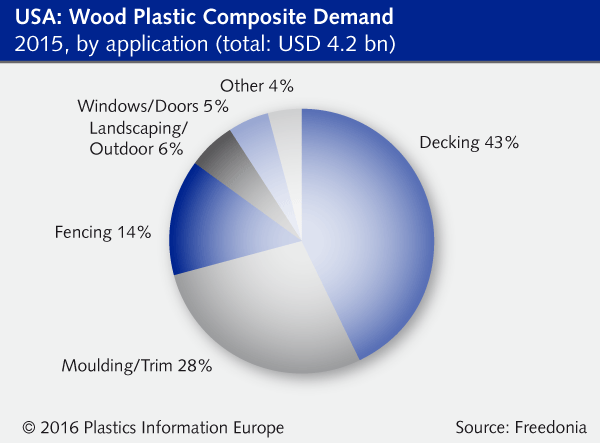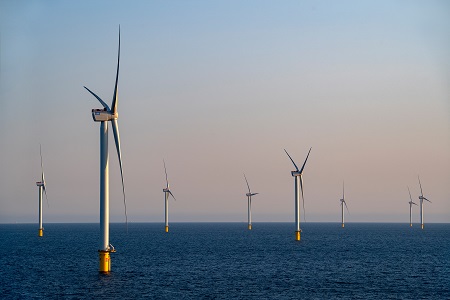
US demand for wood-plastic composites (WPC) and plastic lumber is forecast to grow by an average of 6.9% per year from USD 4.23 bn (EUR 3.72 bn) in 2015 to USD 5.90 bn in 2020, supported by the consumer trend to install decking to increase outdoor living, according to Freedonia (Cleveland, Ohio / USA; www.freedonia.com). WPC and plastic lumber are continuing to take market share from wood in decking applications, and also in moulding and trim applications, because of their favourable aesthetic and performance properties, the market research company says in a new report, “Wood-plastic composite & plastic lumber

.
In particular, consumers who opted for less costly wood products, especially during and following the global recession, are expected to increasingly choose WPC and plastic materials as economic conditions improve. At the same time, demand for WPC and plastic lumber is being boosted by rising homeowner interest in adding outdoor kitchens and al fresco dining areas, gazebos and play areas with playground equipment. In many cases, WPC and plastic lumber products will be used in these applications.
Manufacturers are offering more aesthetically pleasing products, such as capstock-coated WPC and cellular PVC lumber, says the report. “These materials better resemble natural wood and require less maintenance, says Freedonia analyst Matt Zielenski. “Producers will continue to offer decking materials with more realistic wood-like surface textures and a broader palette of colours, such as those that look like tropical hardwoods.
Decking applications accounted for 43% of US WPC and plastic lumber demand in 2015, while the second largest end-used sector, moulding and trims, accounted for 28%, says the report. Demand for WPC and plastic lumber in decking applications is forecast to rise by an average of 7.1% per year to USD 2.57 bn in 2020, while demand in moulding and trim applications is predicted to grow by 6.4% per year to USD 1.61 bn.
Release Date:06/10/2016














